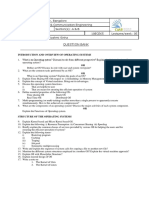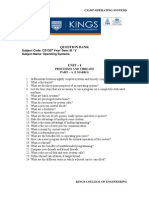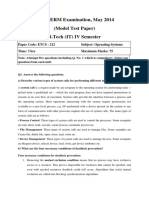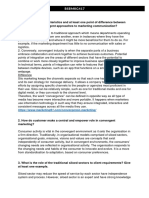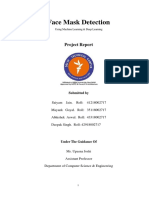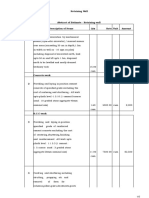0% found this document useful (0 votes)
66 views9 pagesOS Assignment Chapterwise (2024-25)
The document contains a series of assignment questions related to Operating Systems, covering topics such as OS structures, processes, CPU scheduling, memory management, file management, and disk scheduling. Each unit includes definitions, explanations, and problem-solving tasks that require understanding of key concepts and algorithms in operating systems. The questions are designed to assess knowledge and application of theoretical and practical aspects of operating systems.
Uploaded by
Anjali MhetreCopyright
© © All Rights Reserved
We take content rights seriously. If you suspect this is your content, claim it here.
Available Formats
Download as DOCX, PDF, TXT or read online on Scribd
0% found this document useful (0 votes)
66 views9 pagesOS Assignment Chapterwise (2024-25)
The document contains a series of assignment questions related to Operating Systems, covering topics such as OS structures, processes, CPU scheduling, memory management, file management, and disk scheduling. Each unit includes definitions, explanations, and problem-solving tasks that require understanding of key concepts and algorithms in operating systems. The questions are designed to assess knowledge and application of theoretical and practical aspects of operating systems.
Uploaded by
Anjali MhetreCopyright
© © All Rights Reserved
We take content rights seriously. If you suspect this is your content, claim it here.
Available Formats
Download as DOCX, PDF, TXT or read online on Scribd
/ 9























